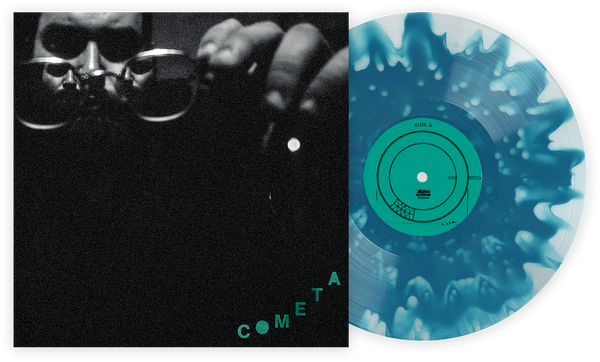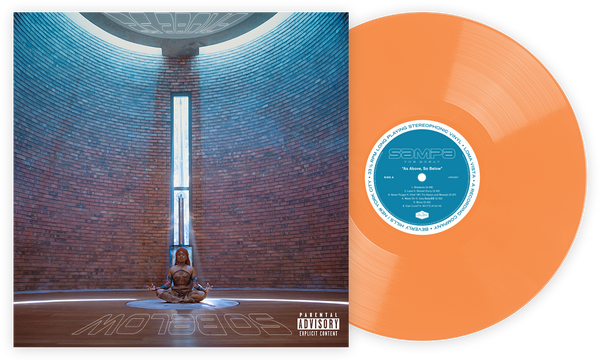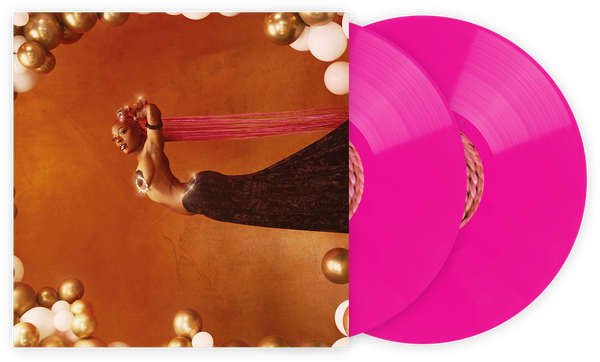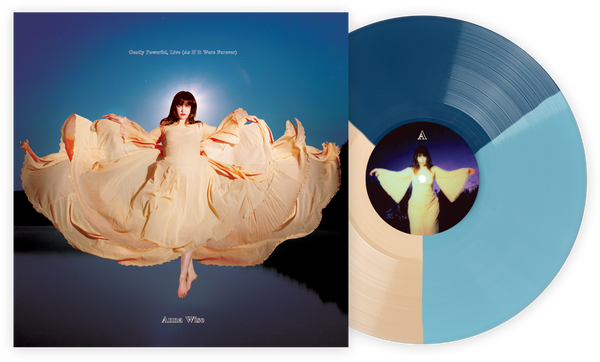In Spring 1968, a 19-year-old Todd Rundgren wrote his first two original songs, “Hello It’s Me” and “Open My Eyes,” for his band Nazz. If he had stopped there, he would’ve already had enough material to alter the fabric of 20th Century popular music. “Hello It’s Me” has since been covered by the Isley Brothers, Mary J. Blige, Erykah Badu, and John Legend, the latter of whom called it his favorite song of all time; “Open My Eyes” was far less of a commercial success, but included on the hugely influential 1972 compilation, Nuggets, it became part of punk rock’s foundational bedrock.
Fortunately for everyone with a pair of ears and a hi-fi system, Rundgren was just getting started. Nazz only lasted for a couple of albums, but he then launched a prolific solo career and later formed the prog rock band Utopia. But wait, there’s more. Unhappy with the production work on Nazz’s early material, Rundgren taught himself the ins and outs of recording and soon became one of the most in-demand producers in pop and rock. Since the ‘70s, Rundgren has produced and played various instruments on albums by Badfinger, Grand Funk Railroad, the Patti Smith Group, Hall & Oates, Meat Loaf, the Psychedelic Furs, and many more.
Operating with the mantra, "If you know what you want, I'll get it for you. If you don't know what you want, I'll do it for you” (according to Nuggets compiler and Patti Smith guitarist Lenny Kaye), Rundgren was a savant in the studio, able to play any instrument but often frustrating his collaborators. Paul Myers, author of Rundgren biography A Wizard, a True Star: Todd Rundgren in the Studio, conducted interviews with many of them and noted that the word that “most frequently came to the lips of his clients and associates… was “genius.” The second most frequent, however, was “sarcastic,” with “aloof” running close behind.”
Rundgren’s singular focus on achieving his vision in the studio meant that he usually only produced one album per artist and often recorded his solo albums alone, overdubbing all of the tracks himself. His obsession with sound led to pitch-perfect covers (of the Beach Boys, Jimi Hendrix, and others on the aptly-named album Faithful, and of the Beatles on Utopia’s quasi-parody album Deface The Music), but also tireless experimentation with effects and primitive electronics, to the point that some of his albums are nearly unlistenable today.
To celebrate Rundgren’s 26th solo studio album, White Knight, which came out earlier this month, we’ve rounded up ten essential albums of his, including solo material as well as production work. One glaring absence is Utopia, whose material reflected Rundgren’s adventurousness but fails to hold up as well as other prog rock from the era. Still, even without any of their ten albums appearing here, this list reflects a greater multitude of genres than most artists or producers could muster in their careers.

Great Speckled Bird: Great Speckled Bird
“When I first became a record producer,” Rundgren notes in Myers’ book, “I thought, ’That’s it, I’m done performing.’” Considering the pedigree of the musicians who played on the first album he produced, it’s not hard to see where he was coming from. Great Speckled Bird were a short-lived country supergroup, led by Canadian husband-wife duo Ian and Sylvia Tyson, and featuring the talents of Buddy Cage (pedal steel guitarist for New Riders of the Purple Sage and Bob Dylan’s Blood on the Tracks), Amos Garrett (guitarist for Stevie Wonder, Emmylou Harris, and others), N.D. Smart (drummer who’d go onto to work with Rundgren throughout the 70s), as well as storied Nashville session musicians David Briggs and Norbert Putnam. Their 1970 debut album, released before any of Rundgren’s solo material, lacks the studio trickery that became his hallmark, but makes up for that with clarity and superb arrangements. Today, it measures up to any other country rock album from the era. Rundgren, 21 at the time of recording, must’ve felt like a kid in a candy shop.

The Band: Stage Fright
Technically, Rundgren didn’t produce the Band’s third studio album, but as it was their first without producer John Simon, his presence shaped the album’s sound more than most engineers do. The Band “produced” this one themselves, recording it live at the Woodstock Playhouse, but because of their lack of experience recording on their own, the sessions were chaotic. Rundgren’s presence didn’t exactly resolve this-- after he insulted keyboardist Garth Hudson, Levon Helm allegedly chased after him brandishing a drumstick-- but he lent an open-minded outlook that Robbie Robertson, in particular, admired. “Todd didn’t play by the rulebook of sound engineers,” Robertson told Myers, “I don’t think he even knew the rulebook.” The resulting album was more musically playful, if more uneven and paranoid, than the Band’s first two albums, the antics and experimentation of the recording sessions audibly captured by Rundgren, even in his reduced role.

Runt: The Ballad of Todd Rundgren
Following his debut album, Runt, Rundgren released his similarly-titled sophomore album in 1971 after gaining some invaluable production experience. He seemed hellbent on showing his diverse range on its predecessor, but true to its title, Runt: The Ballad of Todd Rundgren was more focused on soul-baring slow burners. These benefitted from Rundgren’s growing sense of perfectionism (“I was becoming very particular about arrangements,” he wrote in the liner notes of a 1999 reissue), and also perhaps from a newfound fondness for marijuana, which he told Myers had a “big effect” on his songwriting. There are a few whiffs on here-- most notably the out-of-place, one-note rocker “Parole”-- but this album is where some of Rundgren’s signature styles begin to take shape. “Bleeding” hints at the herky jerky grooves he’d go on to inject into songs that were otherwise melodically smooth, and “Chain Letter” even provides a mission statement for the methodical-but-goofy approach that’d become his calling card: “Don't take yourself too seriously/There are precious few things worth hating nowadays/And none of them are me.”

Sparks: Sparks
Any brief bio of Rundgren will tout the commercial monoliths he produced in the ‘70s before so much as mentioning his solo career, but it’s important to note that even at his peak of popularity, the restless enigma was always intently listening to the fringes of rock. His first major discovery was Sparks (then called Halfnelson), an idiosyncratic L.A. art rock group led by brothers Ron and Russell Mael. After hearing a demo of their track “Roger” (which wound up on this album), Rundgren told Myers, "I thought, 'Nobody's doing this,' which is exactly why I had to do it!" He personally urged the head of his label to pick up Sparks, and in late 1971, produced their debut album. Blending proto-glam with cabaret bravado and a mile-wide weirdo streak, the brothers Mael seemed beamed in from a garish, sugary future that actually ended up being not so far off from what the glammy ‘70s eventually evolved into. Their third album, Kimono My House, is a cult classic that blows Sparks out of the water, but the latter’s still one of the most charmingly bizarre 1971 albums you’ll ever hear.

Something/Anything
The practice of one artist playing every instrument on what seems to be a full-band album has become more commonplace as overdubbing and editing have become easier. Because Something/Anything is often regarded as the first instance of this, I like to call this method “Rundgrening.” Technically, the album’s fourth side features a few studio musicians, but as that follows some 18 tracks of Rundgren playing often mind-bendingly complex parts on his own, I think we can all agree to give him a pass. No longer just sticking to grass, Rundgren partially credited his increased output and creativity to Ritalin and a range of psychedelics, including DMT, mushrooms, and peyote. Thusly, the wunderkind’s confounding third album (and first double LP) contained some of his biggest solo hits-- “I Saw the Light” and the far more famous update on Nazz’s “Hello It’s Me”-- as well as batshit experimentation. In particular, “Breathless” is an unexpected trip, an early electronic workout that only the likes of Shuggie Otis was attempting at the time. In the years since Something/Anything’s 1972 release, Stevie Wonder, Prince, Billy Corgan, Sufjan Stevens and Tame Impala’s Kevin Parker have all Rundgrened various albums of their own, many of them citing Todd as a personal hero.

A Wizard, A True Star
What would happen if you siphoned out all of Something/Anything’s radio-ready tracks and turned the hallucinatory weirdness up to eleven? Rundgren’s next album, A Wizard, A True Star, is the definitive answer to that question. To be fair, there are easygoing moments on the album, but “moments” is the keyword. Twelve of A Wizard’s 19 tracks clock in at under three minutes, and nine last less than two. The result is an unnerving psychedelic tapestry that purposefully mimics the peaks and valleys of a trip; quoth Rundgren, “A lot of people recognized it as the dynamics of a psychedelic trip—it was almost like painting with your head." Some (myself included) consider this Rundgren’s opus, an hour-long journey through a genius mind that’s usually finicky and perfectionist, but in this state, is a heightened funhouse of the senses. I consider some of the “perception-altering” reputation that surrounds psychedelics to be overhyped, but to the degree that such substances allowed Rundgren to access these aggressively peculiar parts of his brain, there’s got to be at least a bit of truth in there.

New York Dolls: New York Dolls
Here’s the single best illustration of how befuddling the trajectory of Rundgren’s career was: in 1973, he produced Grand Funk Railroad’s testosterony hard rock classic, We’re an American Band, founded prog-rock wankers Utopia, and somehow simultaneously influenced a movement that’d spend most of its peak raging against both of those genres. "The irony is that I wound up producing the seminal punk album,” Rundgren later told Myers, speaking of New York Dolls’ debut, which probably would have been a complete disaster and flop had it not been for him. The band was founded on a “fake it until you make it” ethos, according to guitarist Sylvain Sylvain, and away from their raucous shows, they couldn’t hide behind pure swagger in the studio. Rundgren acted as a babysitter as much as a producer, recording a cowbell click track for the band’s drummer when he couldn’t keep time, plugging in the bassist’s cabinet midway through a take, and playing several synth parts that the band couldn’t muster themselves. Sure enough, the final product holds up today, despite whatever macho power struggles went down during the recording. The band’s publicist said that despite Rundgren seeming “disdainful” throughout the process, “he got the job done really well,” and Sylvain attributed the album’s influence on punk to its production, specifically the way Rundgren panned the guitars. Had Johnny Rotten known that the same guy responsible for punk’s Rosetta Stone was simultaneously making prog and shlock-rock records, he probably would’ve bailed on the genre and started Public Image Ltd. a hell of a lot earlier.

Meat Loaf: Bat Out of Hell
Despite everything Rundgren contributed to mainstream hard rock, everything before and after Bat Out of Hell pales in comparison. The histrionic, campy album is one of the best-selling of all time, and not only did Rundgren produce it, he also played lead guitar on all but two of its tracks and essentially financed it himself when writer/composer Jim Steinman was hung out to dry by RCA. All of this while he took a snide view of the actual music itself, telling Myers:
“I thought it was a parody of Bruce Springsteen. Oddly enough the world took it seriously. There’s this big, fat, operatic guy doing totally over the top, over-wrought, drawn-out songs. All this bombast. It was like Bruce Springsteen squared. I was just chuckling the whole time, and I’m still chuckling. I can’t believe the world took it seriously.”
Nevertheless, his enthusiasm for something he perceived as groundbreaking, if simultaneously goofy, persisted, as Meat Loaf said Rundgren told him, "I've got to do this album. It's just so out there." Even if the album’s impassioned songs still elicit smirks rather than awe from Rundgren, its success allowed him to basically do whatever he wanted for the next few years.

Hermit of Mink Hollow
Rundgren’s solo career hit a stall after A Wizard, what with Utopia getting rolling, high-profile production jobs picking up, and a slew of solo records ranging from quaint (covers/originals collection Faithful) to completely inadvisable (overstuffed synth smorgasbord Initiation) hitting the shelves. He had conquered the world, and was trying desperately to find new terrain upon which to stake his claim. But sometimes even geniuses benefit from getting back to the basics. For Rundgren, that meant holing himself up in the studio and making relatively simple, lovelorn pop music again. 1978’s Mink Hollow was the product of a winter Rundgren spent living in a house in a remote part of Upstate New York, and fittingly, it’s much sadder than most of his albums (though there’s still room for absurd asides like “Onomatopoeia”). If it’s a masterpiece, the “m” is definitely lower case, but Mink Hollow is something akin to Rundgren remaking Runt: The Ballad of Todd Rundgren after conquering the world of recorded music and returning deflated but wizened.

XTC: Skylarking
At this point, we’ve seen Rundgren’s music at its most adventurous (A Wizard, A True Star) and its most commercially successful (Bat Out of Hell), but it wasn’t until 1986 that he achieved the closest to perfection he’s reached thus far in his career. British new wave band XTC had been around the block a few times by this point, but with the last release from their psychedelic pop-themed side project, the Dukes of Stratosphear, outselling their last XTC album, their label was looking to change the band’s formula. Guitarist Dave Gregory recalls that, "We were called in and told: 'Look lads, your career's down the toilet unless you start to sell records in America.' So we were given this long list of American producers, and the only name on it I knew was Todd's." The resulting sessions may have been the most heated of Rundgren’s career (which is saying something), with a massive rift forming between him and frontman Andy Partridge, but out of chaos came one of the most pristine pop albums of the 1980s. XTC molded their fondness for the ‘60s into something that meshed with the zeitgeist, and with the help of Rundgren’s equipment, achieved an album that sounds untethered to any era. The band got an unexpected hit in “Dear God,” and after some time, one of the most acclaimed albums of the decade. Despite Partridge and Rundgren’s differences, which extended to the final mix of the album, the former later admitted that, “Musician and producer Todd Rundgren squeezed the XTC clay into its most complete/connected/cyclical record ever. Not an easy album to make for various ego reasons but time has humbled me into admitting that Todd conjured up some of the most magical production and arranging conceivable.”
Patrick Lyons is a music and culture writer from Washington State, currently living in Portland, Oregon. Equally enthralled by black metal and hip hop, catch him making maddeningly eclectic choices on the aux cord.
Join the Club!
Join Now, Starting at $44Exclusive 15% Off for Teachers, Students, Military members, Healthcare professionals & First Responders - Get Verified!








